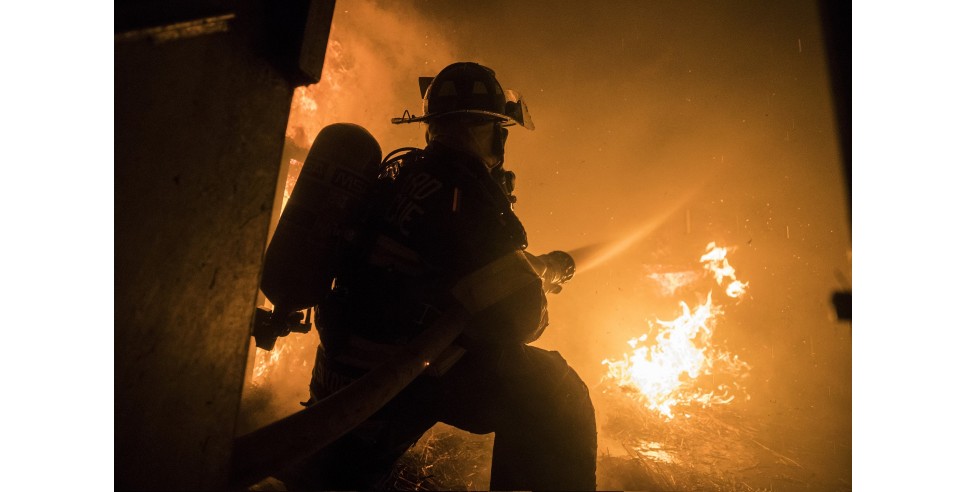
We can see the importance of the role of the free press in this country and around the world when multiple publications are focused on the same topic, especially when the reporting is investigative in nature. Stories come and go in the news lifecycle – but a second crash of a Boeing 737MAX in less than five months, with a cumulative loss of 346 lives – have made this story unforgettable. Boeing’s story, as most Washington State residents know, is the story of aviation, from the firm’s beginnings in its William E. Boeing Red Barn, which is incorporated today as part of the Museum of Flight, “the largest independent, non-profit air and space museum in the world.” The museum shows and tells the story of where the planes we fly on today have come from.
I live in the city where Boeing is at once a source of economic fuel and community pride, a global competitor for a very expensive and well-made manufacturing product. Boeing sells its fleets of airplanes designed by its own engineers to airlines around the world, but also to governments, including our own. Over the years, as both costs and competition has increased, the company has become methodical in making decisions that cut costs yet maintain quality. Though it has moved its corporate headquarters to Chicago and opened other manufacturing plants, its major engineering and production facilities are directly north and south of Seattle, supported by strong engineering and machinists’ unions as well as third party contractors.
How we got to this point, with Boeing 737MAX airplanes grounded all around the world, has been written about extensively. Here I should like to analyze the situation using an operational risk lens to look at the types of risk at this point in what is still a very dynamic situation.
In part because of the Boeing 737MAX, I have revised my definition of operational risk from the standard Basel definition, to now read as the “possibility of human or financial or reputational loss from the intersection of failed or broken processes, people, systems or external events.” In this analysis, I’ll be looking at several critical factors, including potential design flaws in hardware or software; certification issues; economic pressures; inadequate training; and political heft.
Design Under Pressure: For some years, Boeing’s key competitor in the global airline market has been the European Union’s Airbus. With Boeing’s 737 model and Airbus’ 320 model, both airlines had managed to introduce new versions of the plane without significant platform redesign. This was important to airlines because it kept their costs of training on new models to a minimum. Things started to change eight years ago, when Airbus announced a Model 320neo, which would be more fuel efficient and which did involve a new engine option (neo). Boeing’s first response early in in 2011 was to opt for a new design to compete with the 320neo, an option that would take until the end of the decide, but which CEO James McNerney felt “our customers will wait for.” The Boeing product development team was already at work, however, and in March of 2011, they announced “We found a way to get a big enough engine under the wing.” By August of 2011, Boeing had concluded that customers would not wait for an entirely new design and made the decision to put new engines on the 737 base. Because that base sits closer to the ground than the Airbus planes, additional redesign had to be done on what previously was a common 737 platform with standard pilot training. Boeing’s first decision to put new engines on an old model triggered additional changes: those engines would have to be mounted higher and more forward to get sufficient ground clearance. Changes also had to be made to the nose of the plane and to its tail. But even with such changes, Boeing still argued it was the same plane and no flight simulator training would be required for pilots, merely several short refreshers on the iPad. For the most incisive reporting on these design changes and the creation of new software called Maneuvering Characteristics Augmentation System or MCAS, see Dominic Gates’ lengthy Seattle Timesarticle “Flawed Analysis, Failed Oversight.”
Certification Issues: In this country, the primary regulator for both airplane manufacturers and airline companies is the Federal Aviation Authority (FAA). The FAA certified the 737MAX8 as safe in 2017, a five-year certification process. Because Boeing is an important vendor to the U.S. government with strong global exports, the Obama administration did not want to lose business to Airbus and was committed to both the Export-Import Bank and to helping Boeing maintain its manufacturing leadership. Though the FAA has always worked with manufacturers and allowed a certain amount of self-certification, Gates finds in his reporting that “when time was too short for FAA technical staff to complete a review, sometimes managers either signed off on the documents themselves or delegated the review back to Boeing.” (Gates, Seattle Times). As a result of this and other reporting, a number of investigations have been opened into the FAA’s process here.
Economic Pressures: Investor confidence, as well as the confidence of air travel passengers around why it took so long for the plane to be grounded after the two crashes, has seen Boeing lose about $40 billion in stock valuation since the second crash. The economic impact to airlines has also been staggering -- they have had to find storage space for the grounded planes, as well as find other planes to put in service or reduce service. Manufacturing has continued on the 737MAX with Boeing stockpiling planes for later delivery when the proposed fixes have been certified. Late last week Boeing notified employees and third-party suppliers that are part of the supply chain that the company would reduce production by ten planes a month, which has a ripple effect on the suppliers. Another way to look at the economic issues to understand what is on the line financially is to note Boeing’s February 19th monthly report. Here are the numbers on delivered and total orders for a selected list of customers: American Airlines (25 delivered, 100 total orders); Air Canada (23 delivered, 61 total orders); Air China (15 delivered, 15 total orders); Southwest Airlines (31 delivered, 280 total orders); and United Airlines (14 delivered, 137 total orders).
Political Heft: According to the Center for Responsive Politics, Boeing ranks tenth among all lobbyists of the federal government (1988-2018), at $274,803,310. Last year alone, it’s estimated Boeing spent $15.1 million on lobbying. The acting secretary of defense is a former Boeing executive. According to a CNN analysis, “Further cementing the company's Capitol Hill ties, a former Boeing lobbyist now serves as staff director on the Senate's Commerce, Science and Transportation Committee,” the committee that will investigate the event.
But will the lobbying it’s done along with its superlative safety record be enough for both the government and global airlines leave their orders for future planes intact? Once the 737MAX has been recertified with corrections and adjustments to MCAS, revisions to the tail and to the single sensor design, will the public feel that the planes are safe to fly? We have always assumed that if a product has been certified by the government, it is safe. Our assumptions here are being tested by a somewhat smug engineering culture that suddenly finds itself with an entirely new audience. It is estimated that the average cost of a 737MAX is around $100 million. New orders are probably in the “wait and see” bucket right now, as problems are fixed. The operational risk stakes are high for all the players, none more so than Boeing and its place in the history of aviation.









